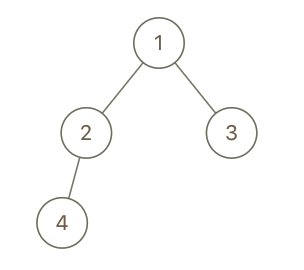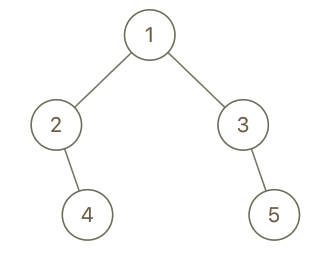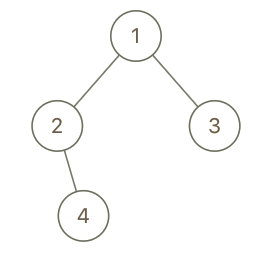Golang算法 - Leetcode
- Introduction
- Algorithms
- 1. Two Sum
- 2. Add Two Numbers
- 4. Median of Two Sorted Arrays
- 5. Longest Palindromic Substring
- 6. ZigZag Conversion
- 7. Reverse Integer
- 8. String to Integer (atoi)
- 9. Palindrome Number
- 11. Container With Most Water
- 112. Path Sum
- 124. Binary Tree Maximum Path Sum
- 129. Sum Root to Leaf Numbers
- 206. Reverse Linked List
- 404. Sum of Left Leaves
- 437. Path Sum III
- 543. Diameter of Binary Tree
- 561. Array Partition I
- 617. Merge Two Binary Trees
- 637. Average of Levels in Binary Tree
- 647. Palindromic Substrings
- 872. Leaf-Similar Trees
- 993. Cousins in Binary Tree
993. Cousins in Binary Tree
题目
In a binary tree, the root node is at depth 0, and children of each depth k node are at depth k+1.
Two nodes of a binary tree are cousins if they have the same depth, but have different parents.
We are given the root of a binary tree with unique values, and the values x and y of two different nodes in the tree.
Return true if and only if the nodes corresponding to the values x and y are cousins.
Example 1:

Input: root = [1,2,3,4], x = 4, y = 3 Output: false Example 2:

Input: root = [1,2,3,null,4,null,5], x = 5, y = 4 Output: true Example 3:

Input: root = [1,2,3,null,4], x = 2, y = 3 Output: false
Note:
The number of nodes in the tree will be between 2 and 100. Each node has a unique integer value from 1 to 100.
题意解析
当两个节点无共同父节点并且处于树种的同一层时称之为 cousin 节点,题中给出两个节点,判断这两个节点是否为 cousin。
解决方案
设定一个全局 Map 记录每个节点的层高以及父节点信息,对树进行遍历,当两个节点都找到时就可以退出遍历工作。
Go 代码
/**
* Definition for a binary tree node.
* type TreeNode struct {
* Val int
* Left *TreeNode
* Right *TreeNode
* }
*/
type Position struct{
Level int
Parent int
}
var depthMap map[int]*Position
func isCousins(root *TreeNode, x int, y int) bool {
if root == nil || (root != nil && root.Left == nil) || (root != nil && root.Right == nil) {
return false
}
depthMap = make(map[int]*Position)
help(root, -1, 0, x, y)
return (depthMap[x].Level == depthMap[y].Level) && (depthMap[x].Parent != depthMap[y].Parent)
}
func help(root *TreeNode, parent, level, x, y int) {
if root == nil{
return
}
switch {
case root.Val == x:
depthMap[x] = &Position{
Level : level,
Parent : parent,
}
case root.Val == y:
depthMap[y] = &Position{
Level: level,
Parent: parent,
}
}
if depthMap[x] != nil && depthMap[y] != nil{
return
}
help(root.Left, root.Val, level+1, x, y)
help(root.Right, root.Val, level+1, x, y)
}